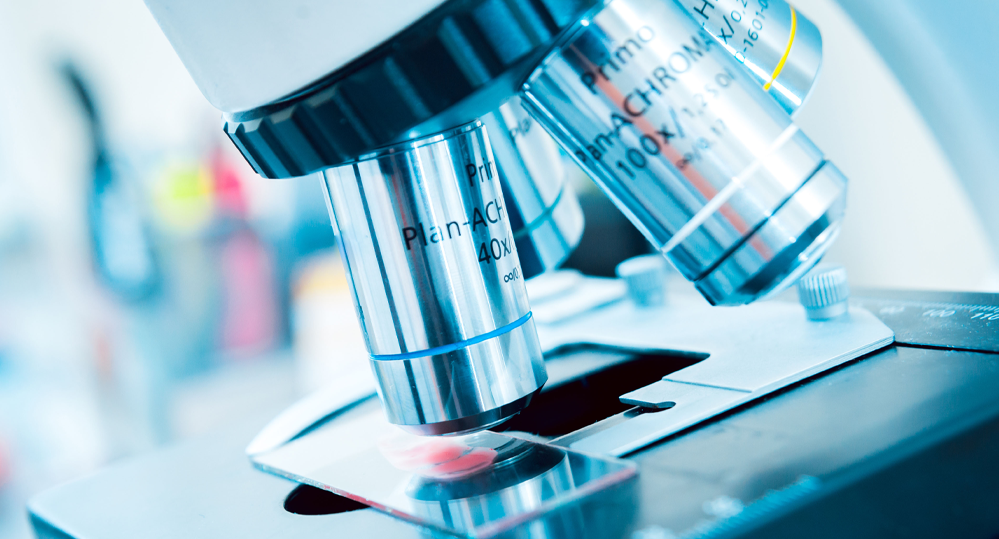The Next-gen Histological Imaging Tool with AI

KEY INFORMATION
Healthcare - Medical Devices
TECHNOLOGY OVERVIEW
Histopathology is a cornerstone of modern medicine, providing crucial information that enables doctors to formulate optimal treatment strategies before, during, and after surgeries. However, current methods for obtaining histological images grapple with a compromise between speed and accuracy and suffer from organ-dependent inconsistencies. Addressing these challenges, our technology was developed as a versatile solution to cater to a wide array of clinical scenarios. It sets a new benchmark for medical standards with its rapid, precise, and label-free on-the-spot imaging capability.
Computation High-throughput Autofluorescence Microscopy by Pattern Illumination is a one-of-a-kind patented solution n that can detect and provide instant information about cancer status before, during, and after surgeries. This technology lets surgeons place fresh tissue samples taken directly from the patient into the microscope and receive high-resolution and virtually stained histological images in just three minutes.
The primary adopters of this technology are expected to be healthcare organizations, hospitals, and research institutions, or any entity involved in histopathology, cancer diagnosis, and surgery. This technology fills a crucial void in the market by providing swift, high-resolution, label-free imaging of thick tissue samples, an achievement previously unattainable. Consequently, this technology not only accelerates the diagnostic process but also enhances its precision, revolutionizing the field of histopathology
TECHNOLOGY FEATURES & SPECIFICATIONS
This is an innovative solution designed to revolutionize histological imaging. It consists of several key components that contribute to its functionality:
- Ultraviolet Light Source: The microscope uses UV light to excite the surface of the specimen, which generates autofluorescence from the biomolecules. This autofluorescence is then captured to produce a high-resolution grayscale image.
- Low-magnification Objective Lens: This component provides a large field of view and is insensitive to the surface roughness of the sample. Despite its low magnification, it contributes to the high imaging speed of the technology.
- Pattern Illumination: This technique has been incorporated to overcome the limitations of the low-magnification lens. It helps to mathematically retrieve high-frequency signals and reconstruct high-resolution images by capturing more details and contours.
- Deep-learning Algorithm: This deep learning algorithm is developed to virtually stain the grayscale images with over 90% accuracy, transforming them into virtually stained H&E images. This aids in the interpretation of the images by pathologists, facilitating an easier and swift adaptation of the technology.
POTENTIAL APPLICATIONS
The technology holds immense potential across various sectors, predominantly in healthcare and medical research. It can be utilized during biopsy sessions preceding surgeries, providing doctors with a rapid means to verify sample sufficiency. This capability can minimize the need for repeated biopsies, thereby improving patient comfort and experience. Furthermore, it aids in preserving the integrity of the tissue sample, facilitating subsequent consumptive testing.
In the operating room, this technology can serve as an intraoperative imaging tool, potentially replacing frozen sections. This enables more rapid and precise intraoperative margin analysis during various cancer resection surgeries. With its capacity for swift and accurate imaging of freshly-excised thick tissue, our technology is anticipated to play an instrumental role in promoting conservative surgeries. Such procedures aim to preserve more normal tissues during tumor removal, enhancing patient physiological function and life expectancy without compromising treatment efficacy.
Lastly, the device can function as a tool for the digitization of tissue samples post-surgery. Hospitals often retain tissue samples for up to 10 years as a reference record. However, physical storage demands significant space and resources to maintain tissue conditions. The ability to digitize these tissues provides a more accessible and convenient resource for research institutes and doctors to conduct further studies, thereby optimizing storage and potentially expediting medical research.
Market Trends & Opportunities
The market size for the technology is substantial, considering it serves the healthcare and medical research sectors, both of which are substantial and growing markets. The global histopathology services market was valued at around USD 22.68 billion in 2020 and projected to grow at a CAGR of 6.5% from 2021 to 2028, reaching approximately USD 37 billion by 2028. The market for medical imaging equipment, which the CHAMP Microscope™ would also fall under, was projected to reach USD 43.3 billion by 2027. These figures suggest a substantial potential market for the technology.
Unique Value Proposition
This technology stands as a significant improvement over the current clinical gold standard in histopathological imaging. The traditional methods, including Formalin-fixed Paraffin-Embedded (FFPE) and frozen section analysis, are either time-consuming or lack precision.
The Unique Value Proposition (UVP) lies in the ability to significantly reduce the time required for histopathological imaging while maintaining high accuracy this technology
- Speed and Accuracy: Offer a high-resolution, label-free imaging solution that can generate high-quality images in just three minutes, a significant improvement over current histopathology methods.
- Thick Tissue Staining : Technology can be used with both slides and freshly-excised thick tissue, eliminating the need for labour-intensive tissue processing and chemical staining.
- Versatility: The technology is applicable across a wide range of clinical scenarios, making it a versatile tool for various healthcare and research institutions.
- Deep Learning Model : The integration of a deep learning algorithm for virtual staining enhances the technology's appeal by minimizing the learning curve for pathologists, making the transition to this new technology smoother.
- Cost and Resource Efficiency: By enabling on-the-spot imaging and reducing the need for repeated biopsies and surgeries, the technology can lead to significant cost and resource savings for healthcare providers.
- Patient Outcomes: By facilitating real-time decision-making during surgeries, the technology can improve patient outcomes.
In sum, the technology offers a faster, more accurate, and more versatile solution for histopathological imaging, significantly enhancing clinical workflow efficiency and potentially leading to better patient outcomes. This combination of speed, accuracy, and convenience sets apart from the current clinical gold standards.
